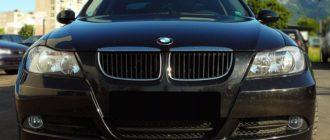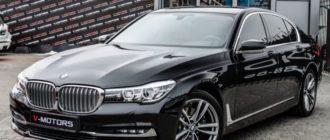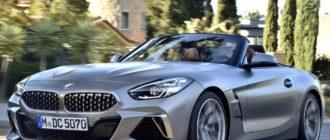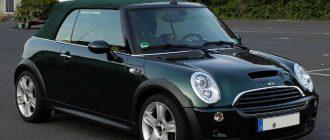The century-old automobile manufacturing company BMW (Bavarian Motor Works) started producing its famous sporty M3 series back in 1986, featuring powerful engines, improved suspension, and aerodynamic body kits. It all began with the BMW M3 e30, the second generation of the 3 Series cars, rolling off the assembly line from 1982 to 1994.
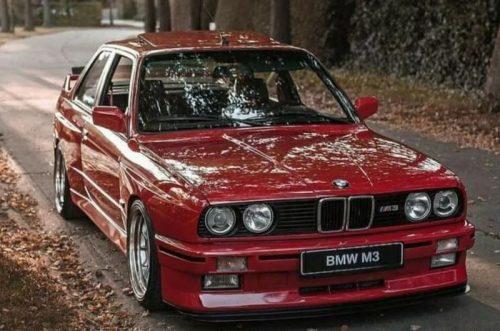
The First Generation of the Legendary Series — BMW M3 e30
Originally conceived as a competitor to the Mercedes 190 E 2.5-16, the car turned into a legendary limited-edition racing vehicle and the pioneer of the sporty branch in BMW's production line that continues to this day. The BMW M3 e30 emerged victorious in over one and a half thousand competitions, even against cars with more powerful engines.
This model practically proved that balance often triumphs over sheer power. The car handles turns much better than long straight stretches of the track. Even when parked, this car looks very dynamic, whether in the 2-door or standard 4-door variant.
The History of the Car's Creation
In 1985, the CEO of Bavarian Motor Works, Eberhard von Kuenheim, made the decision to create a powerful version of a city sedan that could compete with perennial rivals like Mercedes-Benz, not only on the roads but also on racetracks.
By engaging their top engineers, they quickly assembled the legendary BMW M3 e30 with the S14 engine, named so because it was put together in just 14 days, practically from what was available at the time, without the need for new ideas or implementations.
Sales began in 1986, with 5 thousand units sold right away, granting them permission to participate in races. Despite the higher cost, the car was very well received by knowledgeable individuals.
The following year saw the release of the Touring model in a station wagon body style, albeit with a modest trunk space. In 1988, a limited edition of 800 units of the convertible model was produced, followed by an even more limited series of the BMW M3 «Sport Evolution» with only 600 units.
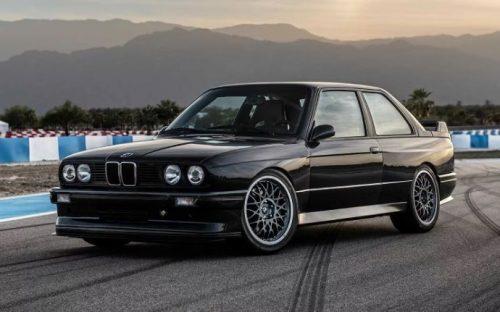
BMW Motorsport GmbH marked its presence with a very limited series (786 units) of the top version of the E30 — M3 Cabrio, a 4-seater convertible capable of reaching speeds of up to 235 km/h.
In total, BMW Motorsport division created 17,970 units of the first-generation M3, a genuine success that exceeded all expectations. Overall, BMW produced and sold over 2 million units of the M3 series, a considerable number for that time.
Exterior of BMW M3 e30
At first glance, a casual car enthusiast may not spot many differences between the BMW M3 e30 and the standard BMW E30. However, the new revolutionary model features sporty calipers, wheels, bumpers, a higher trunk, spoiler, and widened body sides.
Moreover, the BMW M3 e30 has no body parts identical to the standard E30. Everything was designed not to reduce atmospheric resistance but to enhance downforce. This was achieved through aerodynamic body kits, the trunk lid, and other specially made components. Despite its somewhat «boxy» appearance, the car boasts an impressive aerodynamic coefficient of 0.35.
In 1987, there were slight changes made to the body in specific areas. The radiator grille was slightly lowered, chrome elements were replaced first with the more fashionable black color, and later on, the bumpers were painted to match the body color. The design of the front and rear lights was also altered.
The body of the BMW M3 e30 was known for its high durability, both in terms of material quality and paint, and when properly maintained, it was highly resistant to corrosion. However, there were some «weak» spots, such as the rear wheel arches and the windshield frame.
The bumpers, side skirts, trunk lid, and spoiler were made of plastic, resulting in a low specific mass of 5.8 kg per horsepower, with the total weight of the car being 1,165 tons.
Read also: Gorgeous BMW M3 F80
Interior of BMW M3 e30
In the BMW M3 e30's interior, everything encourages the driver to feel like a racer:
- Seats of a distinctive shape that provide a sporty driving position.
- Indicators showing speed and engine revs.
- A sporty-style steering wheel (with power steering from 1987) and a soft accelerator pedal.
- Instruments placed on the control console, with the console's geometry oriented towards the driver.
Engine and Transmission
Initially, the BMW M3 e30 was equipped with a 2.3-liter 4-cylinder engine producing 200 hp, capable of accelerating the car from 0 to 100 km/h in 6.7 seconds, with a top speed of 235 km/h (230 km/h with a catalytic converter), a benchmark that distinguished a regular city car from a racing machine at the time, all without turbocharging.
This engine effortlessly revved up to 10,000 rpm and could be equipped with a catalytic exhaust neutralizer, a significant ecological advancement for the time. This engine is still considered one of BMW's best, with just one minor drawback — the lack of hydraulic compensators.
Therefore, the valves had to be adjusted every 70,000 km, which was not a significant issue in terms of cost or time. The other undeniable advantages of this highly reliable engine more than compensated for this slight inconvenience.
The 5-speed manual gearbox was noted for its precision and smoothness. For racing purposes, the gearbox operation was designed in a dog-leg configuration, combining gears 2, 3, and 4, and 1 with 5. The braking system with ABS and ventilated discs, along with a high-pressure pump, provided power steering and independence from the engine-generated vacuum, resulting in relatively low fuel consumption — less than 9 liters per 100 km.
The same 0-100 km/h acceleration figures were achieved by 6-cylinder gasoline engines of the same displacement but with increased power at 215 and 220 hp (corresponding maximum speeds of 241 and 243 km/h). The engine with 195 hp (2.3 liters) was two seconds slower, and the 192 hp (2.0-liter) engine took 8 seconds to reach similar speeds of 230 and 227 km/h, respectively.
Suspension of BMW M3 e30
The blend of comfort and high-speed driving was achieved by the BMW M3 e30's excellent suspension with an electronically locking differential, striking a perfect balance in the transmission. The car accelerated rapidly from 2nd to 5th gear without any hitches, crucial for races.
Unlike typical harsh and uncomfortable sports cars, the BMW M3 e30 Motorsport featured a rather soft and elastic suspension that responded precisely to all road surface peculiarities.
Prices
In 1986, the offered price for the BMW M3 e30 «racing car» was relatively high — 58,000 German marks, whereas the same BMW M3 Cabriolet was available for sale at 25,000 marks less. By 2002, when German marks were finally phased out and replaced by euros, 2 marks equaled 1 euro.
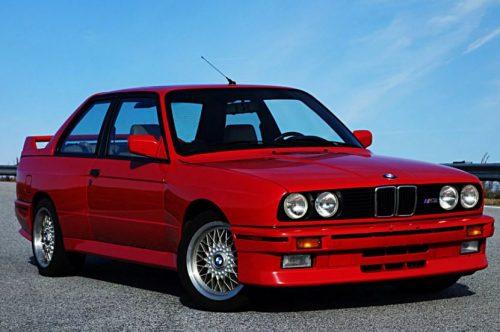
Currently, prices for the BMW M3 e30 vary widely, considering the scarcity of these vehicles, which naturally drives prices up. It's worth noting that their lifespan was three times longer than that of current M3 models. And it's been a quarter of a century since the M3 e30 went out of production.
In Russia, a worn-out model of the 318 series can be purchased for a modest sum of 100,000 rubles. Abroad, various BMW M3 e30 models in better condition are available at quite acceptable prices ranging from 0.4 to 1.2 million rubles, and some at exorbitant prices — three-quarters of which are filled with the past three decades, the model's image, and the excessive ambitions of private sellers.
For instance, a BMW M3 E30 Nach Vollrestauration black sedan from 1987 is offered for nearly 90,000 euros, while a red EVO 2 Motorsportpaket 1988 with a manual gearbox is priced at 82,500 euros.
Conclusion
For over 5 years since the release of the BMW M3 e30, it consistently dominated in touring car races (DTM) and became the most successful city car in this subset of motorsport. In touring car races, the compact 2-door model painted in BMW colors with a 300 hp engine (special assembly) left no chances for its competitors, swiftly collecting various sports trophies and winning prestigious titles, including the most renowned ones.
In 1987, it claimed the top spot at the World Championship for touring car races. In 1993—1994, BMW won the ADAC Cup in the GT category with the standard engine MZ GTR.

